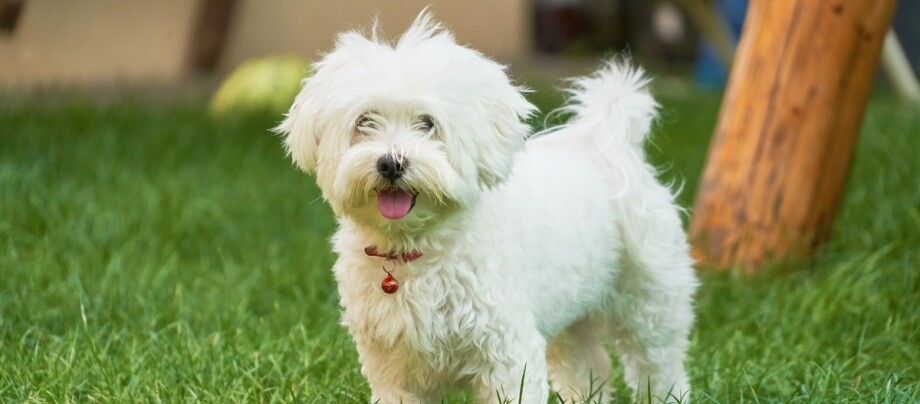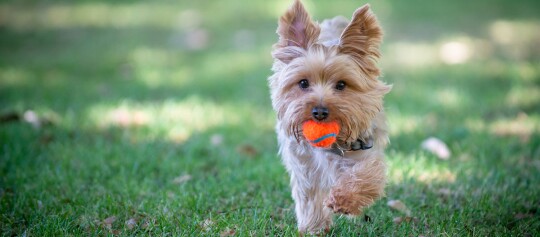Maltese – Lively, Self-Confident Little Whirlwind with a Big Heart
02.01.2024 - Reading time: 3 minutes

Once you’ve looked in to the faithful black button eyes of a Maltese, you’ll never go back. This lively little companion dog wraps dog-lovers around his paw with his joyful and vivacious ways. The Maltese is active, playful and child-friendly. He loves to romp and play, both with other dogs and his family. At home, he is cuddly, vigilant and affectionate.
NewsletterMaltese
Breed | Maltese |
Origin | Mediterranean |
Classification | Society dog and companion |
Size | Male 21 to 25 centimetres, Female 20 to 23 centimetres at the withers. |
Weight | 3 to 4 kilograms
|
Physique | Body longer than it is tall; short, straight limbs, proud head |
Eyes | round, dark button eyes |
Ears | long, thickly coat-covered hanging ears |
Coat and colour | long, shiny, thick, white, silky coat |
Nature | lively, playful, self-confident, ready to learn |
Care | daily coat care to prevent matting of the coat |
Health | Tendency towards eye irritation and conjunctivitis due to the coat |
We have the best products for your Maltese!
An intelligent charmer with an aristocratic pedigree
The Maltese is one of the oldest breeds of dog in the world – it was already know in the ancient world. It originates in the Mediterranean region, though not from the island of Malta, as the name might suggest. The word Maltese likely comes from the Semitic word “màlat”, meaning “harbour” or “refuge”. The ancestors of this little whirlwind were at home in the harbours of the Mediterranean. There, they raced around between the ships and storehouses, always on the look out for mice, rats or other tasty treats. Even in ancient Rome, the Maltese was a favoured companion dog for aristocratic ladies. During the Renaissance, this clever dog finally conquered the upper classes and since then has lived the high life.
The personality of the Maltese
Curious, lively, joyful and vigilant all describe this little white fur ball. Best of all, he loves following his people everywhere they go, which is rarely a problem thanks to his small size. The adventurous and courageous Maltese is always ready to play and needs sufficient activity: these dogs are almost always up for extended playtimes, agility or dog dancing. Once the lively Maltese has worn himself out, he prefers to snuggle up close to his people and enjoy a good pet. On the other hand, this little dog is shy around strangers, but this changes quickly once he gets to know them. If the Maltese is not challenged mentally and physically, he can become destructive and “cheeky”.
Training and keeping a Malteser
The Maltese is a self-confident and intelligent dog. If he is not trained well, he will walk all over his human companion. When he is a puppy, you should be determined and consistent. With patience and calm, you can teach your puppy the most important commands and rules, as he is very eager and willing to learn and cooperate. The better a Maltese is trained, the easy it will be to handle him in daily life. Those who are inexperienced in keeping dogs should take their dog to an obedience school: with the help of an instructor, you will learn how to train your dog and, at the same time, strengthen your relationship to one another.
Early socialisation with other dogs at dog parks or puppy play groups is also a good idea and makes meeting other dogs later easier: if your Maltese is used to meeting other dogs, he will greet them with confidence and respect.
Care and health of a Maltese
The long, soft coat of the Maltese needs regular care, ideally daily, because it will mat otherwise. Get your dog used to daily brushing when it is a puppy. If the shiny, silky coat gets too long and hangs to the floor, then it’s time for a visit to the groomer. This is usually every two to three months. The coat over the eyes should be shortened or tied up with a hairband so that it doesn’t fall into the eyes. Otherwise, this can lead to conjunctivitis.

